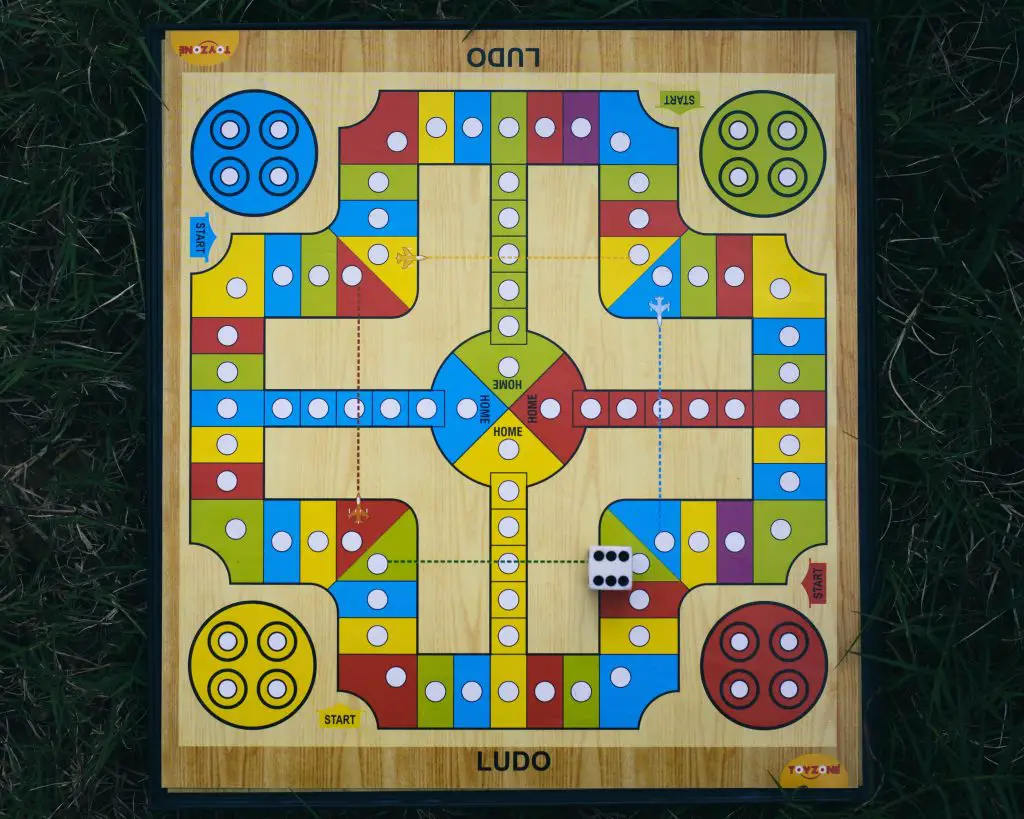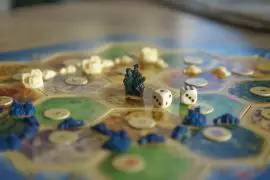Twilight Struggle is a two-player board game that simulates the political and military struggle between the United States and the Soviet Union during the Cold War. Strategy is essential to winning the game, as players must make strategic decisions to control regions, gain an advantage with cards, and balance scoring regions versus event cards. In this article, we will explore the fundamentals of Twilight Struggle strategy, from basic tips for beginners to advanced tactics for experienced players.

Understanding the Game Mechanics
Contents
Twilight Struggle is played on a map of the world divided into various regions. Players take turns playing cards from their hands, each of which has an event that can be triggered or can be played for its operations points, which are used to influence regions, coup, or realign. The game is won by scoring victory points through controlling regions or triggering specific events.
The game board is beautifully designed, and players use various components such as influence markers, military markers, and scoring tracks to keep track of their progress. Each region has a stability number that reflects how easy or difficult it is to influence that region.
The different types of cards in the game are divided into three decks: Early War, Mid War, and Late War. Each deck has its unique events and operations. Events can be triggered when played for either player’s benefit, while operations allow players to move influence, coup, or realign.
It’s essential to understand the effects of the cards in the game since they can significantly impact the board state and a player’s ability to win the game. Some events are one-time effects, while others have lasting effects throughout the game. Knowing how to balance the benefits and drawbacks of each card is crucial to success in Twilight Struggle.
Basic Strategy
If you’re just starting out with Twilight Struggle, it’s essential to have a few basic strategies in mind to help guide your gameplay. Here are a few tips to get you started:
- Focus on Controlling Regions: The game is won by controlling regions and scoring points. Focusing your efforts on securing specific regions can help you gain an advantage over your opponent. Prioritizing regions with high victory point totals is often a good starting point.
- Understand the Card Effects: Each card in the game has a specific effect that can be used to your advantage or disadvantage. It’s crucial to understand the potential impact of each card so you can make informed decisions when playing them.
- Be Strategic with Your Cards: Some cards are more valuable than others, and using them wisely is important. Holding onto powerful cards until the right moment can give you a significant advantage, but playing them at the wrong time can have disastrous consequences.
- Keep an Eye on the Defcon Level: The Defcon level is a measure of the tension between the US and USSR. If the Defcon level drops too low, players risk triggering a nuclear war, which can be catastrophic. Keeping an eye on the Defcon level and playing cards strategically to avoid lowering it can help keep you in the game.
- Plan Ahead: Twilight Struggle is a game of long-term planning. Understanding the potential consequences of your actions several turns in advance can help you make more informed decisions and stay ahead of your opponent.

Advanced Strategy
Advanced strategy in Twilight Struggle requires a deeper understanding of the game mechanics and a willingness to take calculated risks. Here are some key tactics and strategies to consider:
- Seizing the initiative: In Twilight Struggle, having the initiative means being the player who takes the first action each turn. This can be a significant advantage as it allows you to dictate the game’s flow. To seize the initiative, aim to control regions that grant bonus points for holding them at the end of each turn, such as Europe or Asia. You can also try to use events that give you the advantage of going first, such as “CIA Created” or “How I Learned to Stop Worrying.”
- Timing and sequencing: The order in which you play cards can significantly impact the game’s outcome. Aim to sequence your cards to maximize their effectiveness, such as playing a card that allows you to place influence before playing one that removes your opponent’s influence. Timing is also critical, as playing a card too early or too late can negate its impact. Consider the board state carefully before deciding when to play a card.
- Mitigating risk: Twilight Struggle is a game of risk and uncertainty, but you can take steps to minimize your exposure to potential losses. Aim to spread your influence across multiple regions rather than focusing on one or two. This way, if your opponent gains control of one region, you still have a presence elsewhere. You can also hold on to cards with powerful events until you can play them at a time when they will have the greatest impact.
- Keeping an eye on the scoring track: The scoring track is an essential component of the game, as it determines who is winning at any given time. Keep track of the score and aim to control regions granting bonus points at each turn’s end. If you are losing, consider playing cards that will help you catch up, such as “We Will Bury You” or “The Iron Lady.”
- Controlling the Middle East: The Middle East is a crucial region in Twilight Struggle, as it grants significant victory points and can be challenging to control. Aim to gain control of countries like Iran, Iraq, and Egypt, which offer a good balance of stability and influence. Be aware of cards like “Muslim Revolution” or “Camp David Accords,” which can quickly change the balance of power in the region.
By mastering these advanced tactics and strategies, you can gain the upper hand in Twilight Struggle and secure victory over your opponent. Remember, however, that the game is still one of risk and uncertainty, and sometimes the best-laid plans can fall apart. Stay flexible, adapt to changing circumstances, and don’t be afraid to take risks when the potential rewards are high.
The Final Turns and Endgame
As the game nears its end, the focus of the players should shift towards the final turns and the endgame. It is crucial to effectively manage the endgame and make strategic moves to maximize scoring opportunities.
One important aspect of the endgame is balancing scoring regions versus event cards. Players should carefully assess which regions they can control or deny to their opponent and which event cards to trigger. Prioritizing events that can swing the game in your favor or prevent your opponent from scoring is recommended. Keep in mind that scoring regions only happen twice in the game, and it is important to make the most of those opportunities.
Timing and sequencing are also crucial in the endgame. Players should plan their moves carefully and consider the potential responses of their opponents. It is also important to anticipate your opponent’s moves and position yourself to take advantage of any opportunities that may arise.
As the game progresses, risk and uncertainty may increase. It is important to mitigate these factors by being aware of potential threats and taking steps to address them. This may involve controlling certain regions, strategically discarding cards, or even bluffing to throw off your opponent.
Common Mistakes to Avoid
When playing Twilight Struggle, even the most experienced players can make mistakes. Whether you are new to the game or a seasoned veteran, it is important to be aware of common mistakes that can be made during gameplay. In this section, we will discuss some of the most common mistakes and offer tips on how to avoid them.
One common mistake is failing to control regions. In Twilight Struggle, controlling regions is crucial to winning the game. If you do not control regions, your opponent will be able to score points, which will put you at a disadvantage. To avoid this mistake, focus on controlling regions early in the game and try to maintain control throughout the game.
Another mistake is failing to effectively use event cards. Event cards can be powerful tools that can give you an advantage over your opponent. However, if you use them at the wrong time, they can also work against you. To avoid this mistake, make sure to read event cards carefully and use them strategically.
Timing is also a crucial factor in Twilight Struggle, and a common mistake is not paying attention to timing and sequencing. For example, playing a card that triggers a powerful event before your opponent has played a card that could cancel it is a mistake. To avoid this, pay close attention to your opponent’s cards and try to anticipate their moves.
Finally, a common mistake is failing to manage the endgame effectively. The final turns of the game can be the most critical, and it is important to balance scoring regions versus event cards. To avoid this mistake, make sure to have a plan in place for the endgame and pay attention to the score throughout the game.
If you do make a mistake, don’t panic. There are ways to recover. One way is to try to make up for lost ground by taking advantage of your opponent’s mistakes. Another way is to focus on controlling regions and preventing your opponent from scoring points. Whatever strategy you choose, it is important to stay calm and focused, even in the face of setbacks.
By being aware of common mistakes and following these tips, you can improve your gameplay and increase your chances of winning Twilight Struggle.

So, What is Twilight Struggle Strategy
In conclusion, Twilight Struggle is an engaging and complex game that requires a thorough understanding of its mechanics and a strategic approach to succeed. As we have discussed, the key to winning is to control regions, effectively use cards, and manage the endgame. It’s also important to avoid common mistakes that can hurt your chances of winning.
While this guide has provided a comprehensive overview of Twilight Struggle strategy, there is always more to learn and explore. We encourage you to continue practicing and refining your skills, experimenting with new tactics and strategies, and seeking out new resources to enhance your understanding of the game.
Remember, Twilight Struggle is a game of skill and strategy that rewards careful planning, patience, and perseverance. With dedication and practice, you can master the game and become a skilled player capable of navigating the intricacies of the Cold War.
Want a list of best unlock games? Read it here.





